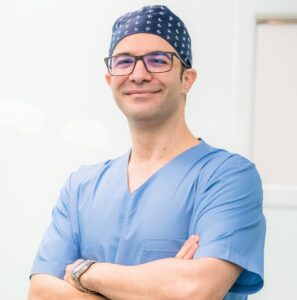Dr. Stylianos Kogeorgos, M.D.
Dr Stylianos Kogeorgos – Endometriosis Specialist, Gynecologist, Minimally Invasive Gynecologic Surgeon
Summary: Dr Stylianos Kogeorgos is a dedicated endometriosis doctor in Athens, Greece, specializing in the diagnosis and treatment of endometriosis. As a highly skilled gynecologist and minimally invasive surgeon, Dr Kogeorgos offers personalized care to women affected by this complex condition. He recognizes that while the exact cause of endometriosis is still unclear, factors like hormones, immune system responses, and genetic influences play a significant role in its development.
Dr. Kogeorgos uses a range of treatments to manage symptoms, including progestogens, hormonal contraceptives, and intra-uterine devices (IUDs), with a focus on improving quality of life. His approach also includes extensive follow-up care for patients post-surgery, emphasizing pelvic floor therapy and collaboration with pain specialists to manage persistent pain.
For women seeking support from an experienced endometriosis doctor in Athens Greece, Dr Kogeorgos combines evidence-based treatments with compassionate, patient-centered care.
City: Athens, Greece
Philosophy: Endometriosis is an estrogen-dependent disease but its exact etiology remains unclear but several regulatory factors are known to support the development or maintenance of the disease.
There are many theories also like, Uterine Peristalsis, Hormones, Lymphatic System, Immune System, Oxidative Stress, Apoptosis genetic and epigenetic factors.
These theories should be taken as hypotheses that need further research to be validated. This is why it is so crucial to keeping investing and funding in endometriosis research within the medical community.
We will be working to support increased research funding, awareness, and advance policy around endometriosis.
Medication: There is no single option that is clearly superior to others, when it comes to symptomatic endometriosis.
Approach to Persistent Pain After Surgery: I liberally use and encourage pelvic floor therapy and pain specialist consultation and follow-up pre and post-operatively.

